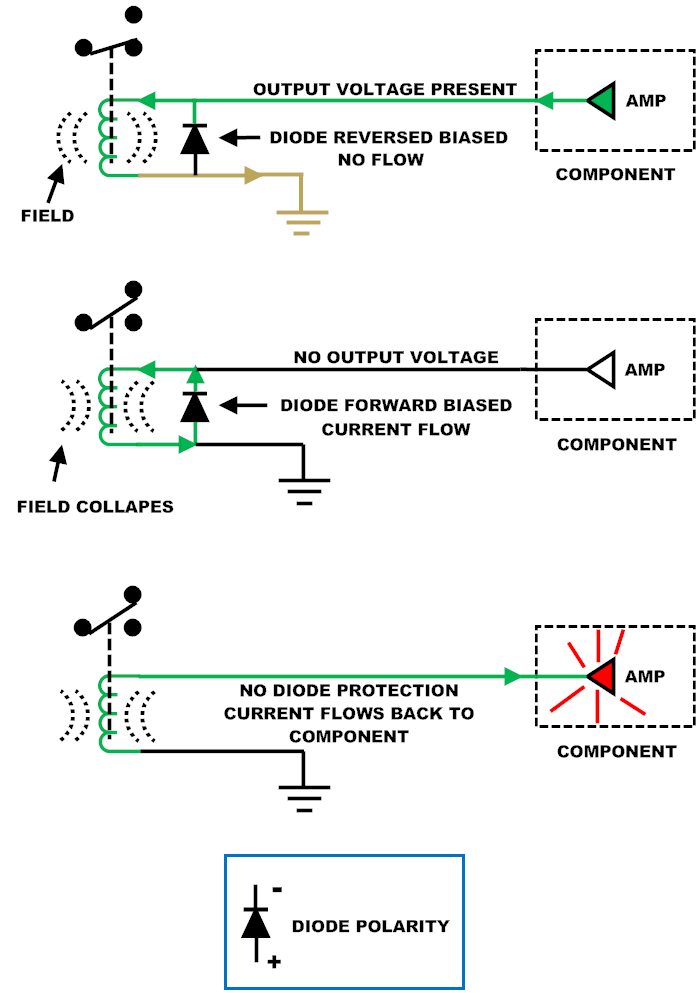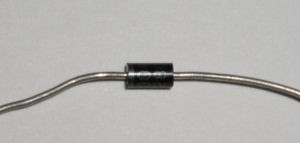| Suppression Diode |
||
|
The majority of relays installed on aircraft will have a diode installed in parallel with the relay coil. This diode is often referred to as a "Suppression Diode". The diode can be installed internal as part of the relay assembly or external as a standalone component. The purpose of the diode is for circuit protection.
All inductors (relay coils included) will build up an electrical field around themselves when voltage is present. If the voltage is removed the field will collapse. As the field collapses a current is induced in the wiring connected to the coil. The suppression diode gives a path for this current to dissipate.
The suppression diode must be accounted for when continuity checking a circuit that has a relay coil in it. It is very possible to read through just the diode when the relay coil is open. Isolation of the diode might be needed for verification of a good circuit.
|
 |
|
 |
||
 |
||
|
THE INFORMATION PRESENTED ON THIS SITE IS TO BE USED AS A GUIDE. APPROVED AIRCRAFT MANUFACTURER MAINTENANCE MANUAL PROCEDURES SHOULD ALWAYS BE FOLLOWED. |
||
